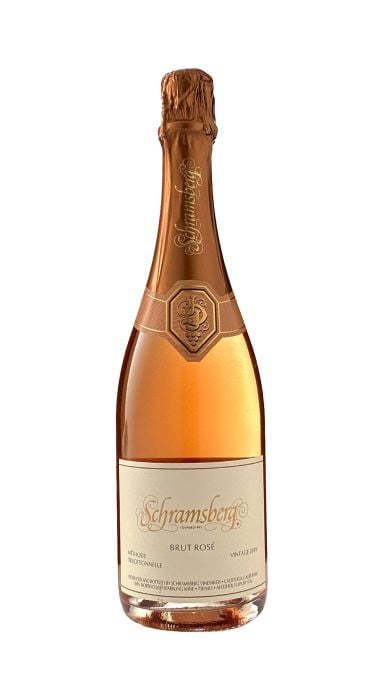Need Help Finding the right wine?
Your personal wine consultant will assist you with buying, managing your collection, investing in wine, entertaining and more.
By continuing, you agree to our privacy policy, consent to cookies, and confirm you are 21 or older.
I have read and agree to the Privacy Policy and Terms of Service.
YOU MUST BE 21 OR OLDER TO CONTINUE
NYC, Long Island and The Hamptons Receive Free Delivery on Orders $300+
Cool Wine Shippers Now Available.
Checkout using your account
Checkout as a new customer
Creating an account has many benefits:

2019 Schramsberg Brut Rose
92 WS
| Type of Wine |
Sparkling
: Sparkling wines have a unique identity among the various wine categories. As their name suggests, they're carbonated, which creates an interesting, compelling texture and combination of flavors. The flavor of a great sparkling wine is so lush, refreshing, and smooth; it goes down like soda water while tasting infinitely sweeter. |
|---|---|
| Varietal |
Proprietary Blend
: Proprietary Blend is a general term used to indicate that a wine is comprised of multiple grape varietals which are either “proprietary” to the winery or is blended and does not meet the required maximum or minimum percentage of a particular varietal. This also is the case for the grape’s place of origin, especially for region, appellation or vineyard designated wines. There are endless examples of blended wines which are labeled as “Proprietary Blend” and in conjunction with each region’s stipulated wine laws and regulations makes for a vast blanket for wines to fall into. Perhaps the simplest example is California; if a wine is to be labeled as Napa Valley Cabernet Sauvignon, it is required to have at least 75% of the varietal (Cabernet Sauvignon) and 85% of the fruit must be cultivated from the Napa Valley wine district. If the wine does not meet the requirements, it is then labeled as Proprietary Blend. |
| Country |
US
: As one of the most prolific and innovative wine regions in the world, America is a joy to explore. Most wine connoisseurs will agree that the nation's finest and most compelling wines are being produced today, which means that we have front-row seats to one of the most inspirational stories in wine history. While other regions tend to focus on specific wine styles and have somewhat strict rules as to which varietals you could grow, areas like California have few such restrictions in place. As a result, creative visionaries behind America's most reputable estates have been able to develop compelling, unique, and innovative styles, with a level of terroir expression that rivals even France's largest giants. |
| Region |
California
: With a history of wine production that dates back to the 18th century, California currently sits as one of the world's most prolific and reputable wine regions. With an area as vast as California, you can expect a colorful collage of terroir profiles, a series of microclimates, and micro-environments that give the wine a unique, memorable appeal. The region's produce is far from homogenized in that sense, and it would take you countless hours to sample all of it. While the region boasts scars from the Prohibition era, it went through what can only be described as a viticultural Renaissance sometime after the 1960s. At that point, California went from a port-style, sweet wine region to a versatile and compelling competitor on the world market. Today, no matter which way your taste in wine leans, you can find a new favorite producer among California's most talented. Notable sub-regions include legendary names like Napa Valley and Sonoma County, places that any wine lover would die to visit. California's quintessential warm climate allows for incredibly ripe fruit expressions, a style that provides a stark contrast to Old World-inspired, earthy classics. Even where inspiration was clearly taken from staple French appellations, Californian winemakers put their own unique spin on the wine. |
| Subregion | North Coast |
| Producer | Schramsberg |
|---|
Need Help Finding the right wine?
Your personal wine consultant will assist you with buying, managing your collection, investing in wine, entertaining and more.